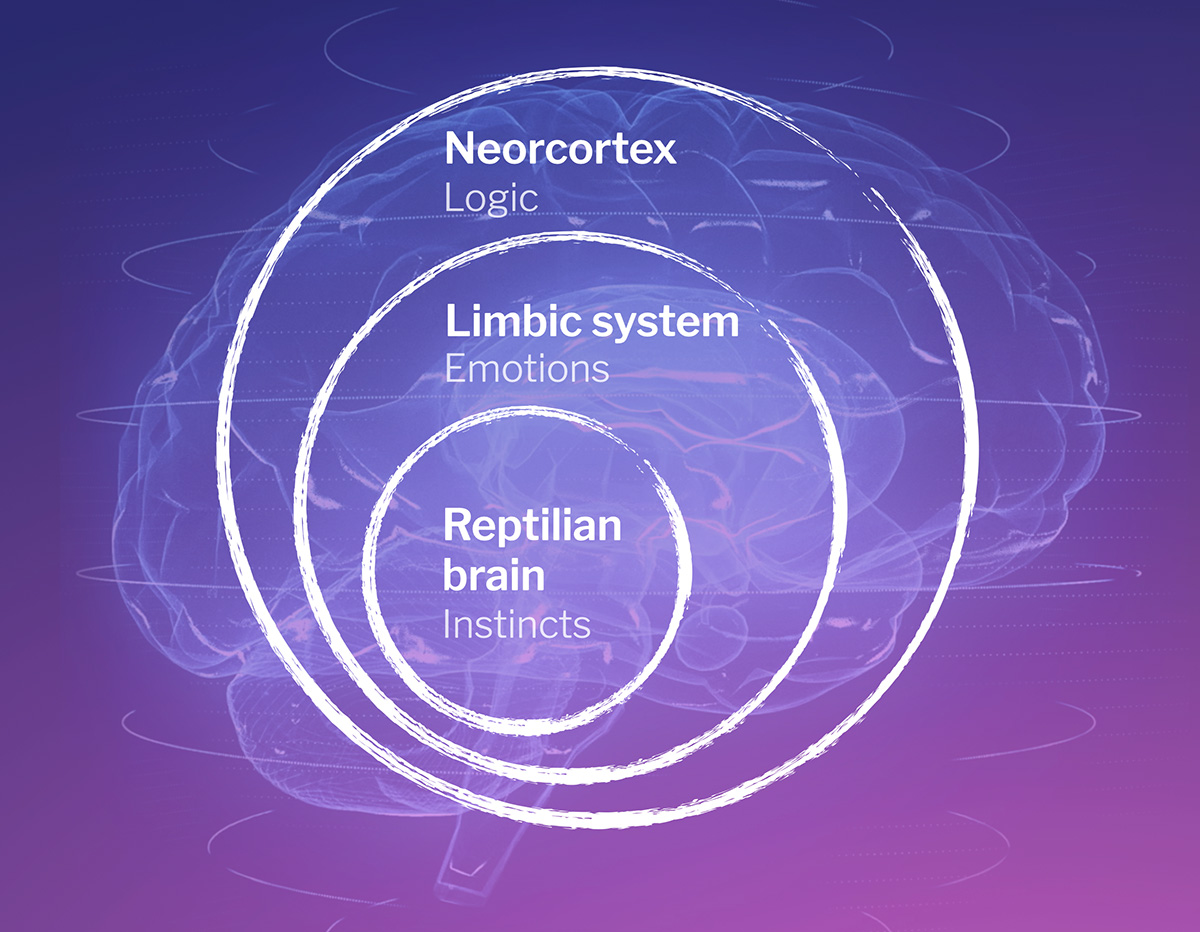
From an outdated “triune brain” to a “construction” theory
“Scientific evidence shows that what we see, hear, touch, taste, and smell are largely simulations of the world, not reactions to it,” Lisa Feldman Barret (“How Emotions Are Made”).
It’s always been a common sense knowledge that reality is distinct from its appearance (to us). But how does it work in a practical sense? The mind is, indeed, constantly simulating (and following) its imaginary models. A subjective “map of the world” that is different to “the territory” (what things are in reality).
Obviously, to our normal perception, it’s not “a map,” but a life-size, “hard” simulation. An undisputed reality “animalistic” parts of our brains respond to. The two fallacies that are to be investigated and discarded, if we want to train the mind successfully.
Have you heard statements like “thoughts popping up in my head are rational and separate from the primeval black box of emotions”? It is another fallacy supported by the outdated “triune brain” science.

A more realistic (and empowering) is the “theory of constructed emotion” by Lisa Feldman Barret. Emotions are “constructed throughout the entire brain by multiple brain networks.” Your perceptions, thoughts, and emotions are products of your brain’s on-the-fly predictions (driven by concepts). The ongoing goal-oriented simulation you call “the mind.”
The beauty of it is that you can change the concepts and the resulting simulation – your emotions, and thoughts. It is one of the foundational ideas behind Cognitive Behavioral Therapy (CBT) too.
The self and other constructs
Your stream of constructed experiences maintains simulations like:
– the self, its identity, values, and roles
– likes/dislikes, wishes
– goal-based interpretation of sensory inputs
– responses like thoughts and emotions
So when you see your boss or a partner, your concepts already inferred desirable (or unpleasant) attributes, generated expectations, and response options. You are free to choose. But only from this predefined set of artificial options (often weighed down by biases and misconceptions).
Even if you understand this in theory, it does not change your mind’s habitual responses. Instead of “a human being,” it is still “the boss I hate” because my simulation prioritizes a misinterpretation of him “unfairly criticizing my work.”
So your mind is pretty much on auto-pilot, serving the simulation. If unaware, you may be offering reign to obsolete likes and dislikes, accumulated biases and misconceptions, and as a result, wasting time and effort on the “wrong” things. Chasing desires and needs that are not even yours. The recipe for unhappiness.
Deviations of your simulation from reality distort your perception and decision-making “compass.” Your every thought, emotion, and action. Often, without you noticing.

Deviations markers expose rigid concepts
What you do notice is the pressure of destructive reactions. Any deviation from simulated preferences causes tension. You also feel relief when this pressure is removed. Either by fulfilling a wish, or removing the internal causes of the pressure.
So destructive emotions are a helpful marker! But let’s put a pin on it for now.
Simulation training
Despite being illusory, this simulated reality is extremely change-resistant. You cannot easily “format the hard drive” and install “the new operating system” of beliefs. Read a book and unlearn decades of habits.
But if approached in a systems manner, a sustainable change of beliefs is possible. You can train your mind. Clear dysfunctional habits and misconceptions to improve objectivity.


